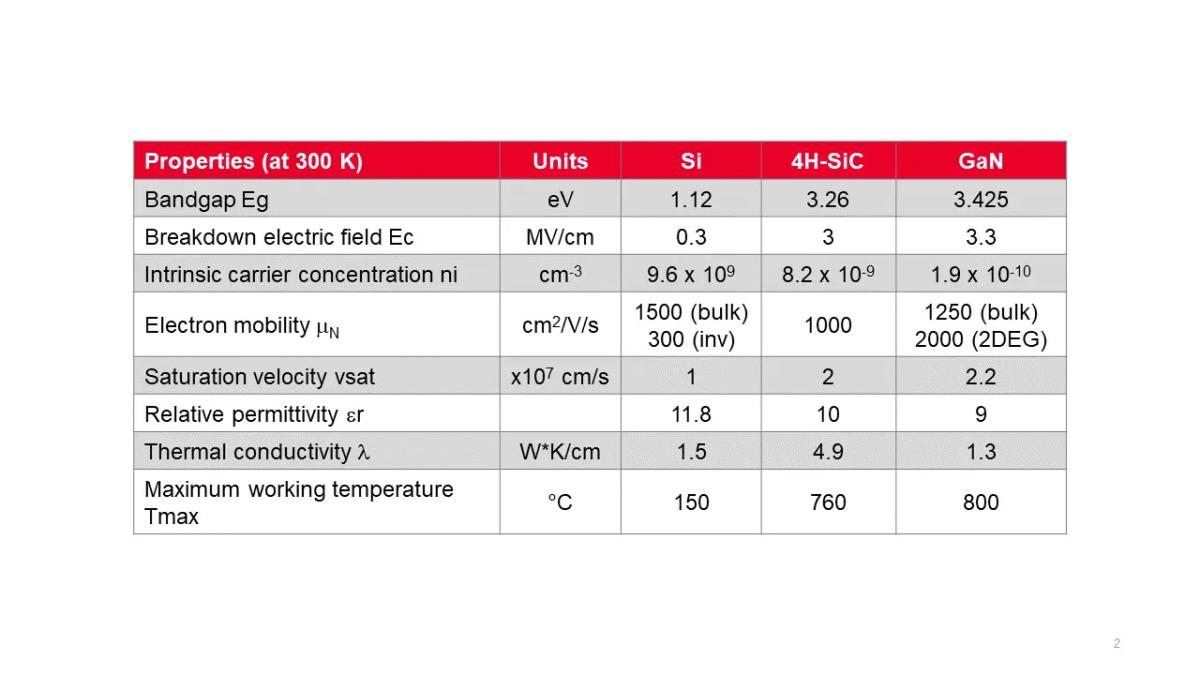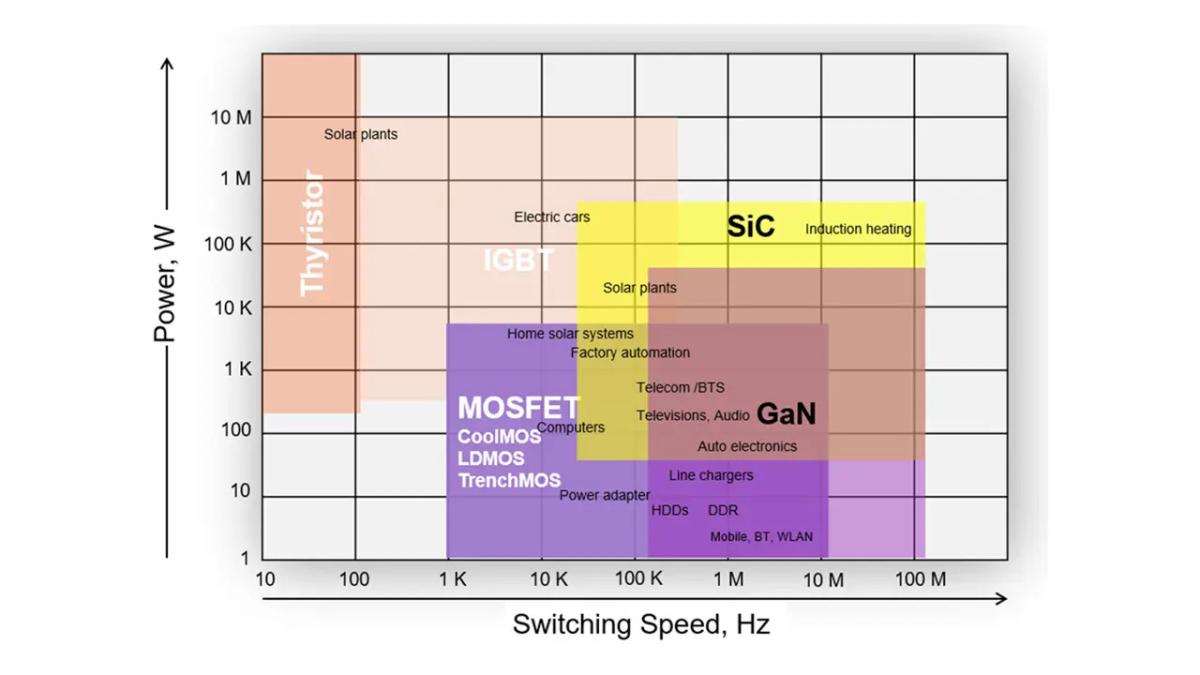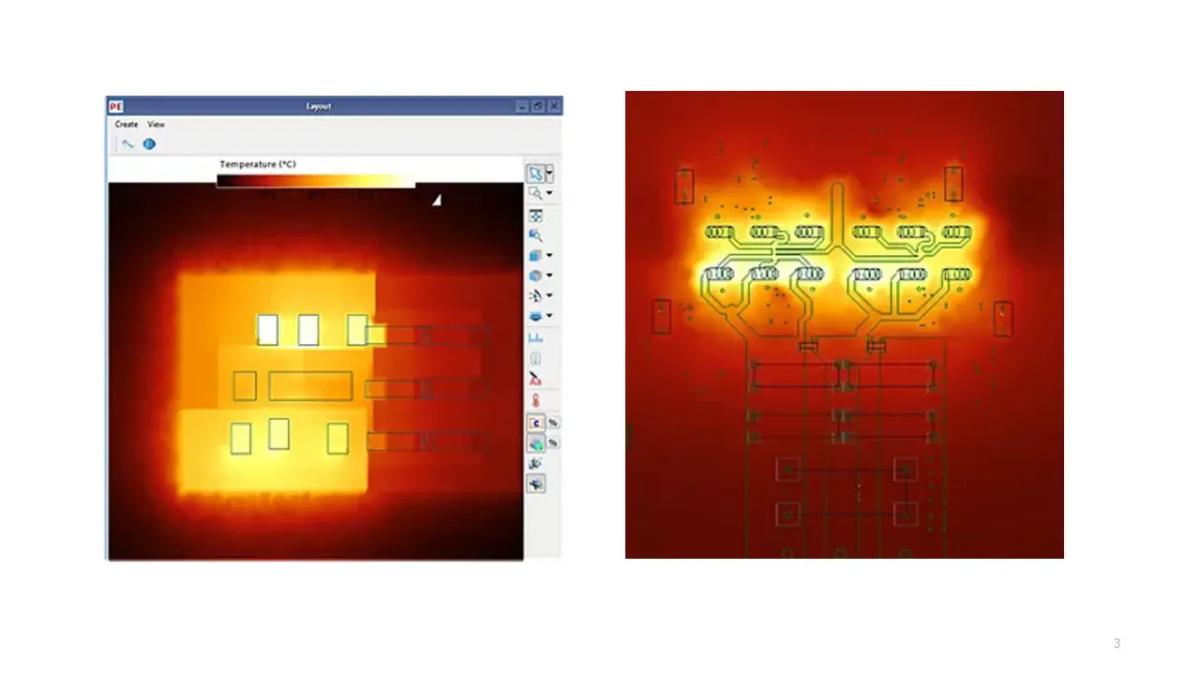What’s Next for Power Electronics? Beyond Silicon
By Emily Yan, Product Marketing Manager
For more than half a century, silicon has been the bedrock of power electronics. Yet, as silicon meets its phy physical limitations in higher-power, higher-temperature applications, the industry’s relentless pursuit of more efficient power systems has ushered in the wide bandgap (WBG) semiconductors era. The global WBG semiconductors market reached $1.6 billion in 2022, with an estimated CAGR of $13% for the next 8-year period. The adoption of WBG semiconductors, notably silicon carbide (SiC) and gallium nitride (GaN), is now setting new benchmarks for performance in power systems across automotive, industrial, and energy sectors. What impact will WBG semiconductors have on power electronics (PE) trends in 2024, and how are they redefining the design and simulation workflows for the next decade?
The catalyst for change: Wide bandgap
The term 'bandgap' refers to the energy difference between a material's insulating and conducting states, a critical factor determining its electrical conductivity.
As shown in Figure 1, with its wide bandgap, Gallium Nitride (GaN) exemplifies the three key advantages this property can offer.
- Faster switching speeds: One of the most significant benefits of GaN's wide bandgap is its contribution to faster switching speeds. The electron mobility in GaN is around 2,000 cm²/Vs, enabling switching frequencies up to 10 times higher than silicon. A higher switching speed translates into reduced switching losses, making the overall designs more compact and efficient.
- Higher thermal resistance: With a thermal conductivity of 2 W/cmK, GaN can dissipate heat and operate at temperatures up to 200°C efficiently. This resilience enables more effective thermal management at high temperatures and extreme conditions.
- Higher voltages: With an electric breakdown field of 3.3 MV/cm, GaN can withstand almost 10 times silicon's voltage.
GaN and other wide-bandgap semiconductors offer solutions for high-power, high-frequency, and high-temperature applications with improved energy efficiency and design flexibility.
Emerging challenges in power electronics simulation
The wider adoption of wide bandgap (WBG) semiconductors, including silicon carbide (SiC) and gallium nitride (GaN), sets new standards in the design of Switched Mode Power Supplies (SMPS) – power efficiency, compactness, and lighter weight.
However, the higher switching speeds of GaN and SiC demand more sophisticated design considerations. Power electronics engineers must manage electromagnetic interference (EMI) and optimize thermal performance to ensure reliability and functionality. Layout parasitics, for instance, can lead to voltage spikes in the presence of high di/dt values. Power electronics engineers face the following pressing questions.
- How can we guarantee reliability for mission-critical applications across a wider range of operating temperatures?
- What are the essential practices for understanding and predicting EMI and noise?
- What tools can we employ to create robust thermal models for comprehensive system-level analysis?
To navigate these complexities, engineers need advanced simulation solutions to address layout parasitic effects effectively and come with robust thermal analysis.
Key Impacts of WBG Semiconductors: From EVs to Renewable Energy
Electric vehicles (EVs)
As global EV sales are projected to increase by 21% in 2024, the power efficiency of automotive power electronics is paramount – every additional percentage is a big win. GaN enables more compact and efficient designs of onboard chargers and traction inverters, extending driving ranges by up to 6%.
Data centers
The digital economy's expansion brings a surge in data center energy consumption, with the U.S. expected to require an additional 39 gigawatts over the next five years—equivalent to powering around 32 million homes. Wideband semiconductors may be key to addressing this challenge by enabling higher server densities and reducing energy consumption and carbon emissions. Specifically, the implementation of GaN transistors in data center infrastructure can lead to a reduction of 100 metric tons of CO2 emissions for every 10 racks annually. This efficiency gain is particularly relevant as the computational and power demands of artificial intelligence (AI) applications soar, potentially tripling the racks’ power density.
Renewable energy
Wide bandgap semiconductors allow for more reliable power output and cost-effective solutions in both residential and commercial renewable energy storage systems. For instance, GaN transistors could achieve four times less power loss than traditional silicon-based power solutions.
The Road Ahead in the Era of WBG Semiconductors
GaN and SiC represent a new wave of material innovation to elevate the efficiencies of power electronics and redefine how we power our world. As the applications for WBG semiconductors expand, Keysight empowers our customers with a unified simulation environment to design reliable and long-lasting electronic systems under various operating conditions.





